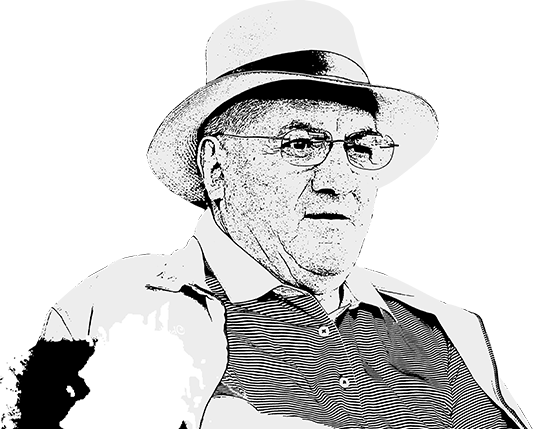What Are All The Positions In Soccer? Visual Guide
When you think about soccer, you might picture the action on the field, but each player’s position plays a crucial role in the game’s flow. From the goalkeeper’s essential saves to the strikers' goal-scoring exploits, understanding these positions can enhance your appreciation of the sport. But what exactly does each position do, and how do they work together? Let’s break it down so you can see the bigger picture of soccer strategy.
Goalkeeper
The goalkeeper serves as the last line of defense in soccer, whose primary responsibility is to prevent the opposing team from scoring. This position involves using hands to stop shots on goal, requiring a combination of reflexes and agility to execute critical saves effectively.
Beyond merely stopping shots, the goalkeeper also plays a pivotal role in organizing the defense and initiating offensive plays from the back, with many modern teams adopting a "sweeper-keeper" style, whereby the goalkeeper is involved in both defensive actions and ball distribution.
Goalkeepers wear specialized gloves to enhance grip and control while also donning distinct jerseys that differentiate them from outfield players.
This unique role has been exemplified by notable figures such as Manuel Neuer and Gianluigi Buffon, who've established benchmarks in both shot-stopping capabilities and skillful ball distribution, thereby contributing to the evolution and elevation of the goalkeeper's role in modern soccer.
Right Fullback
The role of a right fullback in soccer is integral to both defensive and offensive strategies within a team. Positioned on the right side of the defense, the right fullback is tasked with marking opposing wingers and providing defensive support against attacks originating from the flanks. This position requires a combination of strong defensive skills, tactical awareness, and the ability to read the game effectively.
In addition to their defensive duties, right fullbacks are also expected to contribute to the attacking phase. They achieve this through overlapping runs that can stretch the opposition’s defense and create opportunities for teammates. This dual responsibility requires excellent stamina and speed, enabling the player to transition swiftly between defensive and offensive roles.
Collaboration with right midfielders and forwards is crucial for maximizing the effectiveness of the right fullback position. By working in tandem with these players, a right fullback can facilitate ball movement and enhance team dynamics.
Historically, players such as Cafu and Dani Alves have exemplified the importance of the right fullback role, showcasing how these athletes can significantly influence both the defensive solidity and attacking potential of a soccer team.
Their careers provide an analysis of the fullback’s evolving responsibilities and the increasing significance of this position in modern soccer tactics.
Left Fullback
Left fullbacks are integral to a team's defensive and offensive dynamics, positioned on the left flank of the defense. Their primary responsibility is to counteract the threats posed by opposing wingers while also facilitating attacking plays. Speed and agility are essential attributes for left fullbacks, enabling them to effectively engage in defensive responsibilities and make overlapping runs to bolster their team's offense.
In a standard 4-4-2 formation, left fullbacks work closely with the left midfielder, helping to maintain width on the pitch. This alignment creates opportunities for delivering crosses and setting up goal-scoring chances.
The modern evolution of the left fullback role, often referred to as a wing-back, sees these players advancing further up the field, taking a more active part in attacking maneuvers.
Players such as Marcelo and Ashley Cole serve as notable examples of left fullbacks who've effectively balanced defensive solidity with significant contributions to their team's offensive efforts. Their ability to defend while also supporting the attack has become increasingly important in contemporary football tactics.
Center Back
Positioned centrally in front of the goalkeeper, center backs are a crucial component of a soccer team's defensive setup. Their primary responsibility involves blocking opposing attackers and mitigating scoring chances for the rival team.
Commonly, center backs operate within structures such as the 4-4-2 or 3-5-2 formations, often working alongside another center back or full-backs, which underscores the importance of effective communication and coordination.
The skill set of a center back typically includes physical strength, positional awareness, and proficient tackling, all of which are vital for regaining possession of the ball.
A keen understanding of the game allows center backs to anticipate the movements of opponents, enabling them to implement defensive strategies such as zonal marking or man-marking, which is essential for maintaining defensive solidity.
Prominent center backs like Sergio Ramos and Virgil van Dijk are noted for their embodiment of these qualities, contributing significantly to their teams' defensive capabilities.
Their performances highlight the importance of these attributes in achieving defensive success at the highest levels of the sport.
Sweeper
The sweeper, often known as a libero, serves an important function in a soccer team's defensive structure by positioning themselves behind the center-backs. This placement allows them to close gaps and intercept passes that may bypass the primary defensive line.
Effective performance in this role requires a keen ability to read the game and anticipate the opposition's attacking maneuvers. Additionally, sweepers contribute to offensive plays by facilitating counter-attacks through the distribution of the ball from deeper areas of the field, which is essential for transitioning play from defense to offense.
Although the sweeper position was historically significant, its prevalence has waned in contemporary soccer. This decrease can be attributed to the increasing adoption of zonal marking and high defensive lines, which have altered tactical approaches and diminished the need for formations that include three center-backs.
Thus, while the role remains relevant in certain contexts, its implementation is less common in modern tactical frameworks.
Defensive Midfielder
In soccer, the defensive midfielder serves an essential role as a protective barrier in front of the center-backs. Their primary responsibilities include winning possession of the ball and intercepting passes to thwart opposing team attacks.
This position is critical for transitioning play from defense to offense, wherein the defensive midfielder strategically distributes the ball to teammates to facilitate forward movement.
Notable players in this role, such as N'Golo Kanté and Casemiro, exemplify key attributes including effective ball control, tactical awareness, and positioning. These skills are important for managing the game's tempo—either advancing the play when opportunities arise or maintaining defensive solidity when necessary.
Additionally, defensive midfielders are required to have high levels of stamina and a strong understanding of game dynamics, both of which contribute to a team's overall balance and performance on the field.
Their ability to read the game and react accordingly is vital for a cohesive team strategy.
Right Midfielder
The position of Right Midfielder is key in both offensive and defensive play within a soccer team. This player operates primarily along the right flank, contributing to the creation of scoring opportunities through effective dribbling and technical skills.
In addition to these offensive responsibilities, a Right Midfielder is tasked with defensive duties, which include tracking back to support the defense and attempting to regain possession of the ball.
Endurance is a critical attribute for a Right Midfielder, as this role often requires covering significant distances, particularly in widely-used formations such as 4-4-2 and 4-2-3-1. This movement is vital for stretching the opponent's defense and creating space for teammates.
Notable examples of successful Right Midfielders include David Beckham and Mohamed Salah, both of whom are recognized for their precision in crossing the ball and their ability to drive offensive plays.
Their contributions highlight the importance of this position in facilitating attacking maneuvers and influencing the outcome of matches.
Central Midfielder
Central midfielders occupy a crucial position on the soccer field, serving as a link between defense and attack. Their role encompasses both defensive responsibilities and offensive contributions, underscoring their importance to the team's overall performance.
A central midfielder must possess high tactical awareness, excellent passing skills, and strong ball control, as these abilities are fundamental in creating scoring opportunities and facilitating play.
Given the nature of the game, central midfielders are required to cover significant ground, engaging actively in both defensive and offensive phases. This dual responsibility necessitates a thorough understanding of the game's dynamics and the ability to make quick, strategic decisions.
Players such as Luka Modrić illustrate the impact that proficient central midfielders can have on a match, showcasing the importance of versatility and skill at this position.
Ultimately, mastering the skills associated with the central midfield role can significantly enhance a player's effectiveness on the field, making them integral to their team's structure and success.
Striker
Strikers serve as the primary goal-scorers in soccer, positioned at the forefront of the attack with the specific responsibility of converting scoring opportunities into goals. Their effectiveness hinges on their ability to exhibit precise positioning and agility.
Strikers can assume various roles, such as a target man, who holds up the ball to facilitate play, or a poacher, who specializes in capitalizing on limited scoring chances.
Notable strikers, such as Diego Maradona, exemplify the technical skill and tactical awareness required in this position. Effective communication and collaboration with midfielders are integral to their performance, as this synergy helps create offensive opportunities.
Additionally, a striker's speed and finishing ability are critical attributes, allowing them to perform well under pressure, thereby enhancing their value on the field.
Attacking Midfielder
The attacking midfielder holds a significant position in a soccer team's offensive strategy. Located just behind the forwards, this role primarily focuses on creating goal-scoring opportunities through effective playmaking. Key attributes of an attacking midfielder include strong ball control, dribbling skills, and shooting accuracy, which are essential for navigating congested areas and posing a threat to the opposition's defense.
In addition to technical abilities, a successful attacking midfielder demonstrates acute game awareness. This allows for rapid decision-making and the capacity to read the flow of the match, enabling the player to assist strikers or make well-timed runs into the opposition's penalty area.
Moreover, the attacking midfielder serves as a vital connector between the midfield and the offense, facilitating fluid transitions and enhancing the team's overall attacking effectiveness.
Research indicates that a proficient attacking midfielder can be a determining factor in a team's offensive success, as their contributions not only increase scoring opportunities but also support defensive responsibilities when necessary.
Thus, their role is integral to a balanced and effective team strategy on the field.
Left Midfielder
The left midfielder is an integral component of a soccer team's tactical setup, particularly in formations such as 4-4-2 and 4-2-3-1. This position is strategically located on the left flank, where the player contributes width to the attack and provides depth to the defensive line.
The left midfielder must possess endurance to effectively cover the distance required for both offensive and defensive duties.
Essential skills for this position include dribbling ability to navigate past defenders and delivering precise crosses into the penalty area. Tactical awareness is crucial, as the player must quickly assess situations to determine the appropriate action, whether that involves passing, shooting, or retreating to aid in defense.
This role also requires vigilance in tracking opposing wingers to maintain solid defensive coverage and ensure team stability. Overall, the left midfielder's performance can significantly influence the dynamics of a match.
Conclusion
Now that you've explored the various positions in soccer, you can better appreciate how each player contributes to the game. Whether it's the goalkeeper's crucial saves or a striker's decisive goals, every role plays a part in the team's success. Understanding these positions enhances your viewing experience and deepens your love for the sport. So next time you watch a match, keep an eye on the unique contributions of each player, and enjoy the beautiful game even more!



